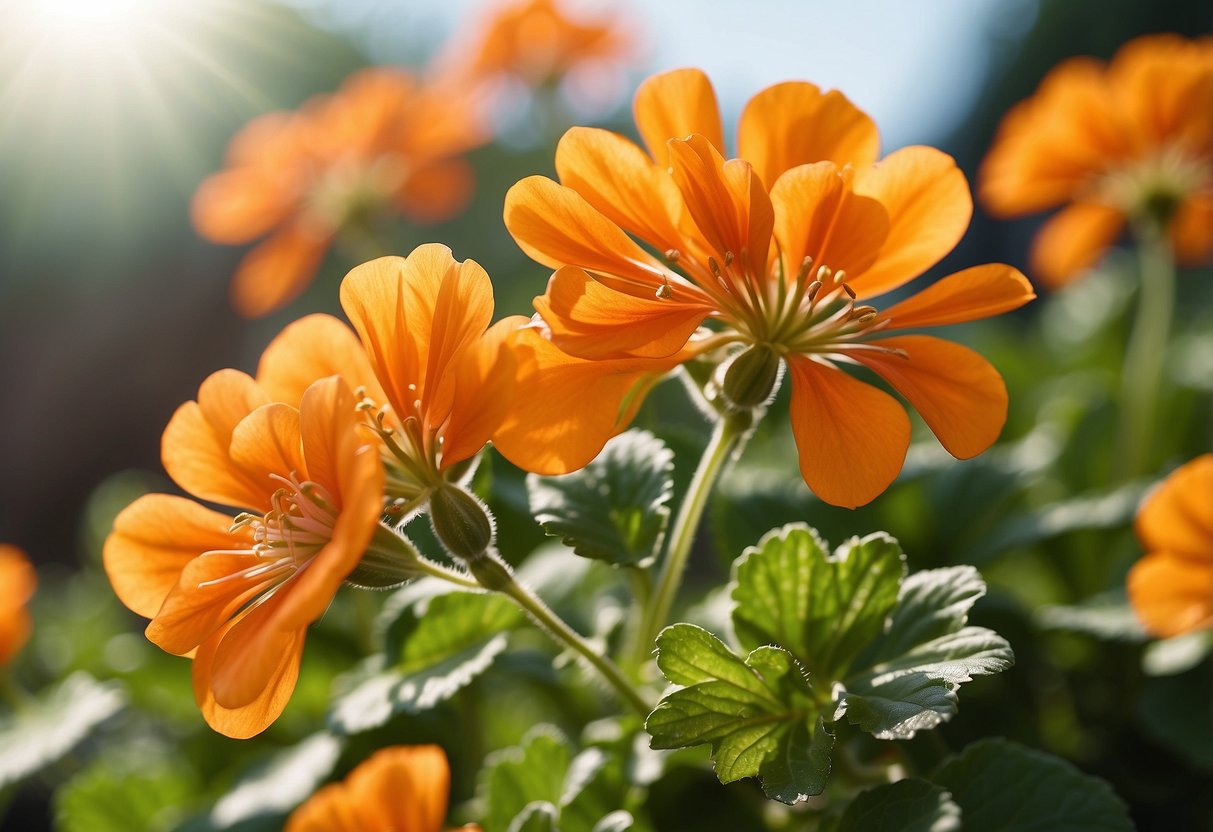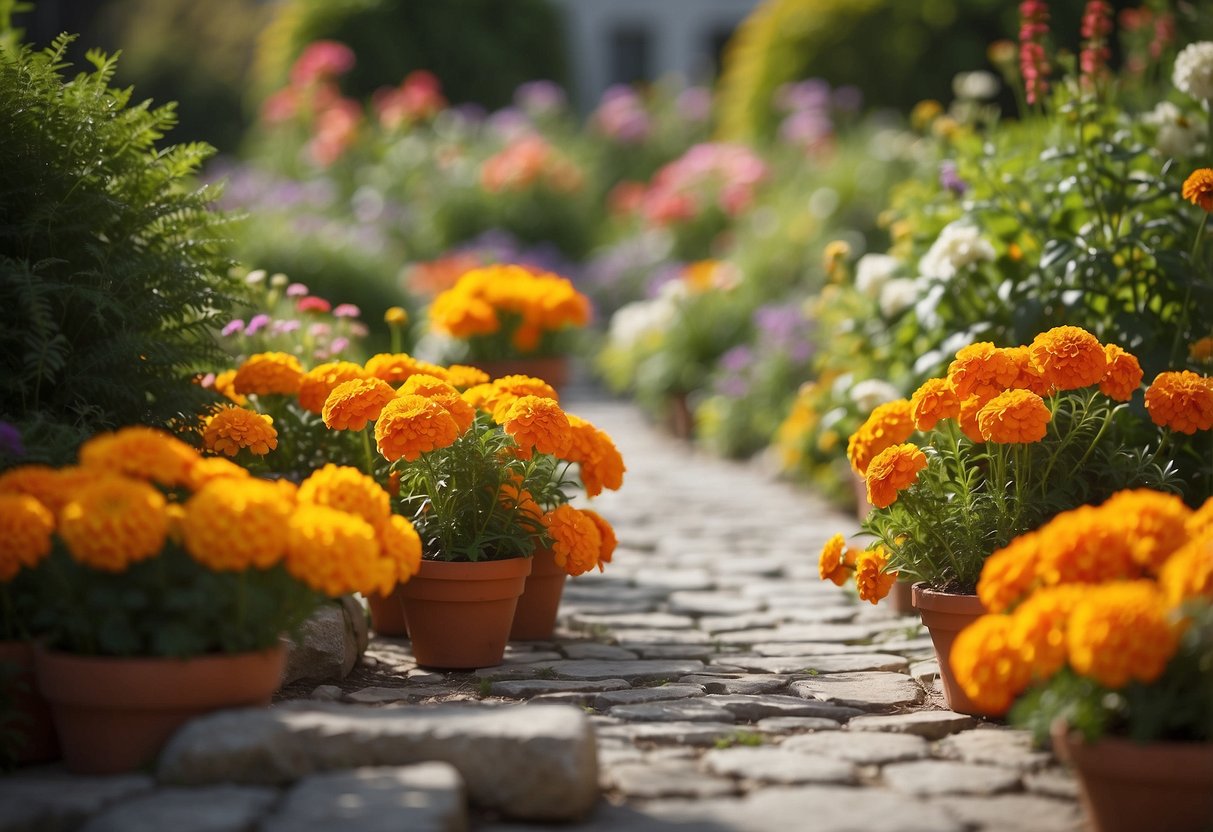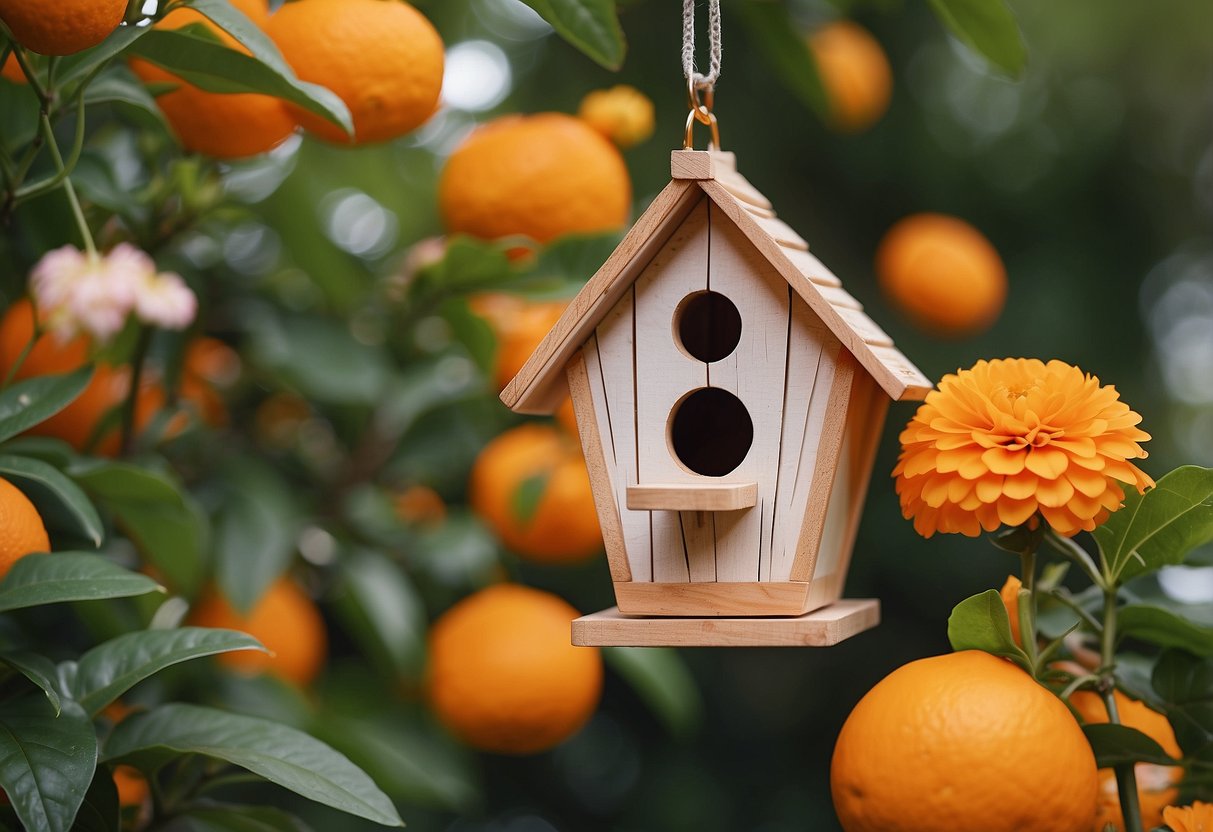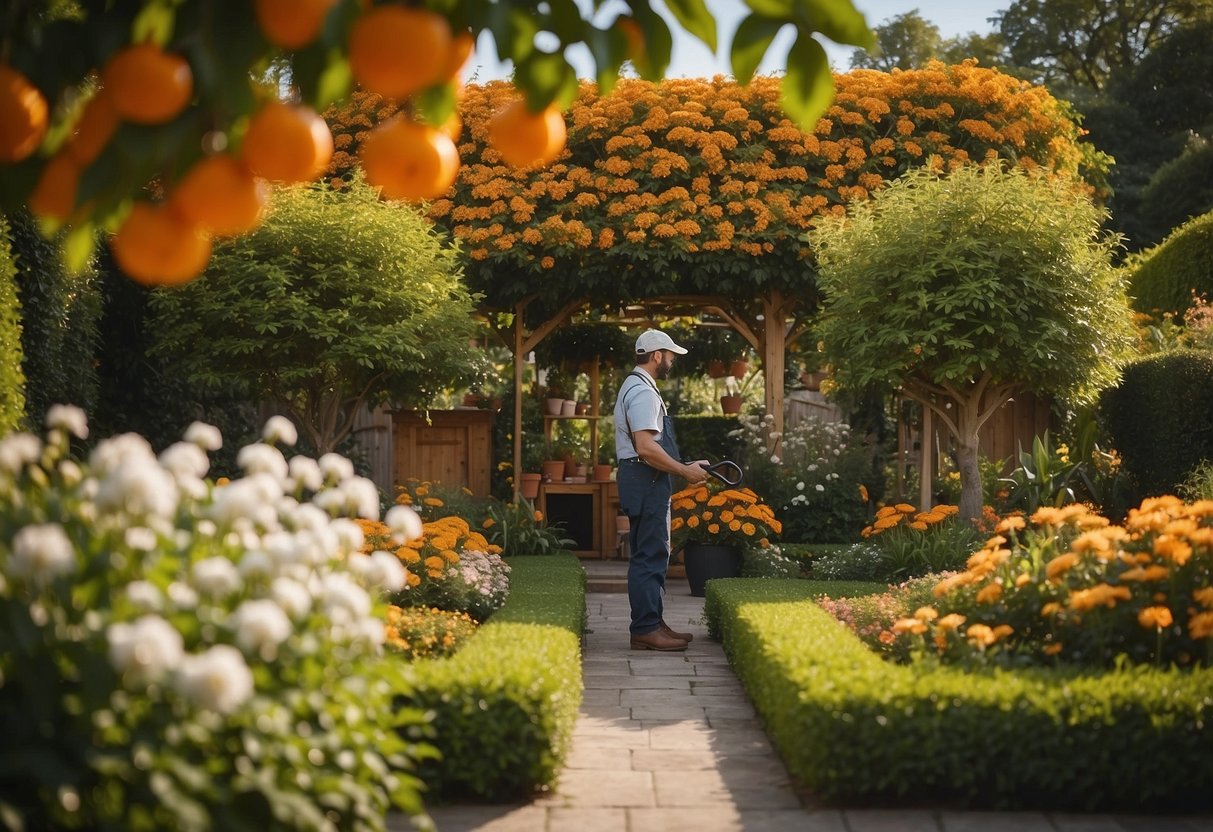Orange Garden Ideas: Brighten Your Outdoor Space
If you’re looking to breathe life into your garden, consider incorporating orange flowers. The vibrant color not only adds warmth and energy but also creates a stunning visual impact among greenery.

What are the best ways to use orange in your garden design? From subtle accents to bold statements, orange flowers can fit any garden style and enhance your outdoor spaces.
1) Grow Valencia Oranges

Valencia oranges thrive in warm and sunny climates. The ideal temperature for these oranges is between 70°F to 90°F with moderate humidity. Aim for about 50% to 70% humidity levels for the best growth.
Once your tree reaches about 2-3 feet in height and frost danger has passed, plant it outdoors. Make sure it’s in a sunny spot and has well-draining soil. Mature trees can reach heights of 15-20 feet, so give them plenty of room to grow.
Remember to water your established tree once a week, checking that the soil is dry 5 inches deep before the next watering. For better growth, apply fertilizer when the fruits start to appear.
2) Plant Scented Geraniums

Scented geraniums are great for adding a touch of fragrance to your orange garden. They have beautiful leaves that come in many scents like lemon, rose, or mint.
These plants thrive in warm days and cool nights, preferring daytime temperatures of 65-75°F. If you want to learn more about growing them, check out Epic Gardening’s guide.
Water the plants when the soil feels dry and make sure they get plenty of sunlight. Regular pruning can help them flourish. Try adding scented geraniums to pots or borders for an added sensory experience.
3) Install Orange Hammocks

An orange hammock adds a pop of color to your garden.
Hang it between two strong trees or use a sturdy hammock stand.
To keep it secure, follow detailed instructions on how to safely hang a hammock.
Add some waterproof string lights for a cozy ambiance during the evening. Enjoy your new, vibrant relaxation spot.
4) Design a Citrus Grove

Start by choosing a sunny spot in your yard. Citrus trees love sunlight, so ensure the area gets at least six hours a day.
Plan the layout of your grove. Space the trees about 15-20 feet apart to give them room to grow. Consider incorporating different types of citrus like oranges, grapefruit, and limes for variety.
Enhance the grove’s appeal with a mix of orange tree garden ideas and additional plants for a lush look. Regular watering and proper fertilization will help your grove thrive.
5) Include Potted Marigolds

Adding potted marigolds to your garden is a great way to bring in bright, orange hues. These flowers are perfect for pots and thrive in full sun.
Place your marigold pots where they can receive plenty of sunlight. Use good-quality potting soil to help the plants grow strong and healthy.
You can also experiment with different containers. Ideas like repurposed wheelbarrows or terracotta planters can make your garden look unique. Learn more about marigold planter ideas on GardenTabs.
6) Add Terracotta Pots

Adding terracotta pots to your garden can enhance its charm. These pots are perfect for planting flowers, herbs, and even small shrubs. Their warm, earthy color fits beautifully in any garden setting.
Try turning a few terracotta pots into creative decorations, like stacked toadstools or painting them to match your garden’s theme. This can add a playful touch to your outdoor space.
Don’t forget to check out other creative uses for terracotta pots to keep your garden looking fresh and inviting.
7) Create a Butterfly Sanctuary

Add plants that attract butterflies to your orange garden. Plants like milkweed and butterfly bush are great choices. They provide food and shelter for butterflies.
Avoid using pesticides in your garden. They can harm the butterflies and their larvae. Instead, use natural methods to control pests.
Place flat stones in sunny spots. Butterflies like to warm up in the sun. This helps them become more active and visible in your garden.
For more ideas, you can visit this guide on butterfly gardens.
8) Incorporate Orange Sunflowers

Adding orange sunflowers to your garden can bring a vibrant splash of color. They are easy to grow and care for, making them perfect even for newbie gardeners.
Plant these sunflowers in sunny spots to help them thrive. They will stand tall and proud, enhancing the visual appeal of your garden.
Mix them with other flowers like lavender or daisies for a stunning look. Orange sunflowers also work well in arrangements inside rustic metal containers for a charming touch.
Explore more ideas for using orange sunflowers to create a standout garden space.
9) Add Orange Garden Gnomes

Gnomes add charm to any garden. Add orange garden gnomes for a fun twist.
Place gnomes near flower beds, trees, or pathways. Choose different sizes and poses.
You can also paint regular gnomes orange. This adds a personal touch to your garden.
Adding orange gnomes will make your garden stand out.
10) Build an Orange-Themed Birdhouse

Creating an orange-themed birdhouse is a simple yet fun project for your garden. Start with a basic birdhouse plan that you can easily find online or in craft stores.
Paint the birdhouse with bright orange colors to make it stand out and attract birds. You can use both light and dark shades for extra flair.
Decorate it with orange-themed items like small plastic oranges or orange-colored stones. Ensure you seal the birdhouse with a waterproof coating to protect it from the elements.
Add a little perch at the front, and your orange-themed birdhouse is ready to welcome new feathered friends!
Choosing The Right Orange Varieties

Selecting the right orange tree involves choosing between dwarf and standard trees, as well as considering your local climate for successful growth.
Dwarf vs. Standard Trees
When choosing between dwarf and standard orange trees, think about the space you have. Dwarf trees grow to about 8-10 feet tall and are perfect for small gardens or container gardening. They are easier to manage and harvest due to their size.
Standard trees can grow up to 25 feet tall. They produce more fruit but need a larger area and more maintenance. If you have ample space and don’t mind the upkeep, a standard tree might be the better option. Valencia, Navel, and Blood oranges are popular choices, and they grow well under both types.
Climate Considerations
Oranges need a warm, sunny climate and are sensitive to cold temperatures. Valencia and Navel oranges are ideal for areas with hot summers and mild winters. They are less likely to suffer from frost damage. Blood oranges prefer cooler climates but still need protection from extreme cold.
Plant your orange tree in a spot that gets full sun and is sheltered from strong winds. In zones where temperatures can drop below 25°F, you might need to provide frost protection or choose a more cold-hardy variety. Make sure the soil is well-drained and slightly acidic to neutral for the best growth. For specific advice, check with local nurseries or agricultural extension services.
Designing Your Orange Garden

Creating your orange garden involves thoughtful planning on layout, spacing, and choosing the right companion plants. These key factors will ensure your garden not only looks beautiful but also thrives.
Layout and Spacing
When planning your garden layout, consider the size and growth habits of your plants. Taller plants like the Iceland poppy can add vertical interest and should be placed at the back of garden beds. This poppy’s tall stem and bright orange petals will stand out.
Incorporate a mix of different shades of orange, from light to deep. This variation helps prevent the garden from looking monotonous. Aim to group plants with similar water and sunlight needs together. This improves plant health and reduces maintenance.
Paths and walkways are necessary for easy access to all parts of your garden. Use materials like gravel or stone to match your garden’s aesthetic. Keep these pathways wide enough for comfortable movement.
Companion Planting
Choosing the right companion plants can enhance the health and appearance of your orange garden. Marigolds are excellent companions as they attract pollinators and beneficial insects. Their bright blooms complement the orange theme well.
You can also plant herbs like basil and thyme. These herbs deter pests and add fragrance. For a more textured look, mix in plants with different leaf shapes and structures. Consider pairing your orange flowers with green foliage plants to create contrast.
Plants like Echinacea not only add another pop of color but also support pollinators. Remember to consider bloom times to ensure your garden has color throughout the growing season.
Maintenance and Care

Maintaining your orange garden requires regular watering and careful pruning. These practices ensure healthy growth and abundant fruit yield.
Watering Requirements
Orange trees need deep watering to thrive, especially during dry spells. Young trees require more frequent watering, about once a week, ensuring the soil remains moist but not waterlogged. Be cautious not to let the water sit around the roots, as orange trees dislike soggy soil.
Older trees can be watered less often but more deeply. It’s vital to water at the base of the tree, ensuring the water reaches the roots. Mulching around the base can help retain soil moisture and reduce evaporation. Ideal mulching materials include organic matter such as wood chips or straw.
During extreme heat, increase the watering frequency to twice a week. Make sure to adjust according to rainfall. Consistent watering helps prevent fruit dropping and promotes healthy root systems.
Pruning Tips
Pruning keeps your orange trees in shape and encourages fruit production. The best time to prune is late winter or early spring before new growth starts. Start by removing any dead or diseased branches. This helps prevent the spread of pests and diseases.
Next, thin out overcrowded branches to allow sunlight to penetrate the tree. This improves air circulation, reducing the risk of fungal infections. Always use clean, sharp pruning shears to make clean cuts.
Key steps for pruning:
- Trim back any crossing branches to prevent rubbing wounds.
- Focus on shaping the tree to maintain a balanced structure.
- Remove suckers from the base of the tree as they draw nutrients away from the main tree.
Proper pruning not only shapes the tree but also helps in producing larger, sweeter oranges.







